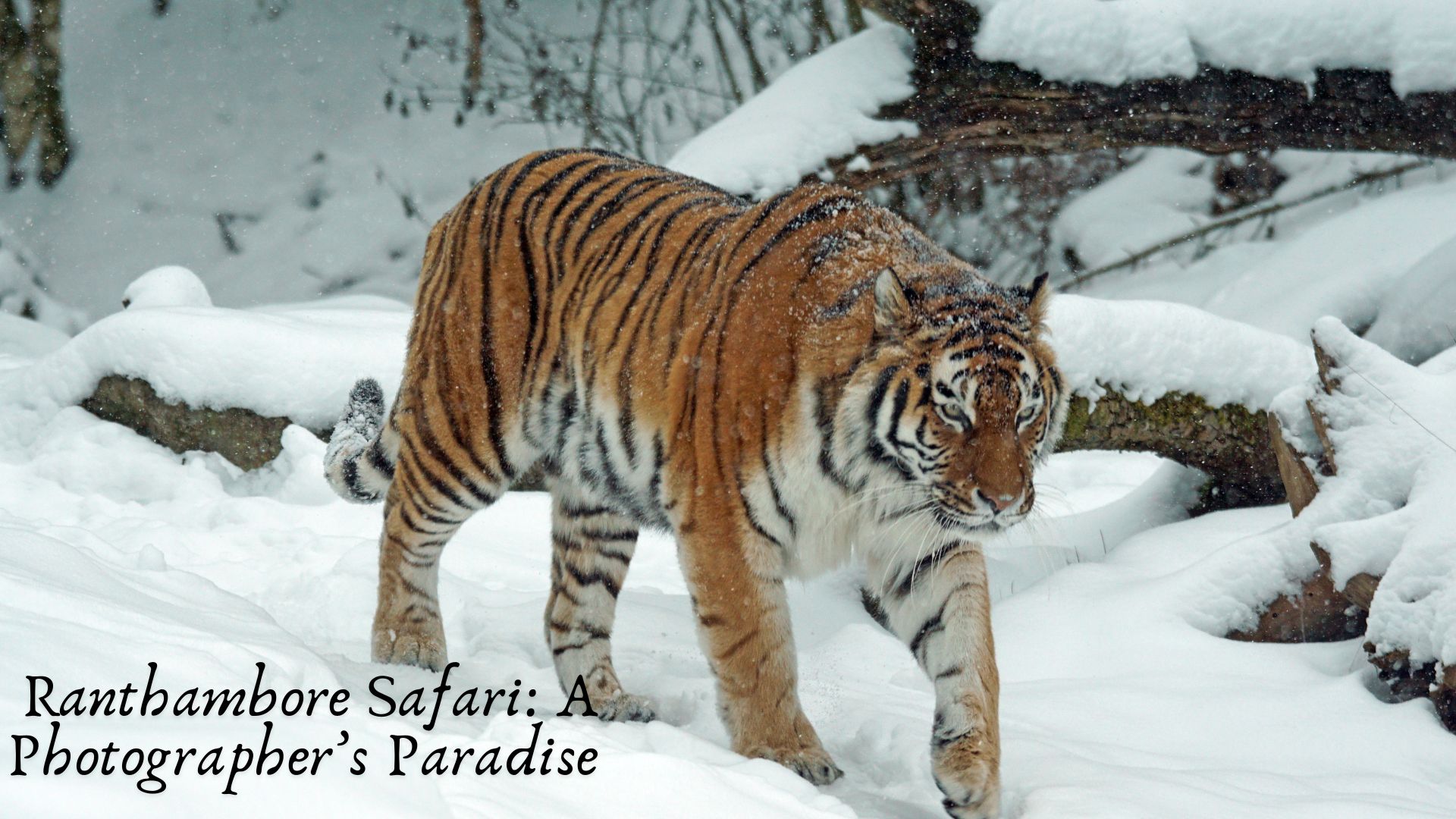Ranthambore Safari | Eye of The Tiger
Nestled in the heart of Rajasthan, India, Ranthambore National Park is a haven for wildlife enthusiasts and photographers alike. This expansive reserve, spread across 392 square kilometers, is one of India’s largest national parks and offers a unique blend of history and nature, making it an unparalleled destination for capturing breathtaking wildlife photographs. Known for its majestic tigers, lush landscapes, and diverse flora and fauna, Ranthambore safari is truly a photographer’s paradise.
The Allure of Ranthambore
Majestic Tigers
Ranthambore National Park is renowned for its population of Bengal tigers, making it one of the best places in the world to observe these magnificent creatures in their natural habitat. For photographers, the thrill of capturing a tiger in the wild is an unforgettable experience. These regal animals, often referred to as the “Eye of the Tiger,” exhibit a captivating presence, whether they are lounging in the shade or prowling through the underbrush.
Diverse Wildlife
Beyond its famous tigers, Ranthambore is home to a rich variety of wildlife, providing endless opportunities for photographers to capture stunning images. The park’s diverse ecosystem supports numerous species, including leopards, sloth bears, wild boars, sambar deer, and a plethora of bird species. This diversity offers photographers a chance to capture the intricate interplay of species within their natural surroundings.
Scenic Landscapes
Ranthambore’s landscapes are as captivating as its wildlife. The park is dotted with ancient ruins, including the historic Ranthambore Fort, which adds a mystical element to the setting. The juxtaposition of wildlife against the backdrop of crumbling fortifications, lush forests, and serene lakes provides a dramatic canvas for photographers to explore. Each season in Ranthambore brings a new palette of colors and moods, from the vibrant greens of the monsoon to the golden hues of autumn.
Tips for Capturing Stunning Photographs
Understanding Animal Behavior
One of the keys to successful wildlife photography in Ranthambore is understanding animal behavior. Photographers who invest time in learning about the habits and movements of the park’s inhabitants are more likely to capture compelling shots. Tigers, for instance, are most active during the cooler hours of the morning and late afternoon, making these times ideal for photography.
Choosing the Right Equipment
Selecting the right equipment is crucial for capturing the beauty of Ranthambore. A telephoto lens is essential for photographing animals from a distance without disturbing them. A good zoom lens will allow photographers to capture close-up shots of tigers and other wildlife, while a wide-angle lens is perfect for capturing the expansive landscapes and architectural elements of the park.
Patience and Timing
Wildlife photography requires patience and a keen eye for timing. Photographers should be prepared to wait for the perfect moment when the light, composition, and subject align. Sunrise and sunset offer the most dramatic lighting conditions, casting a warm glow over the landscape and adding depth to the images.
Respect for Nature
While the thrill of capturing the perfect shot is exciting, it’s essential to remember the importance of respecting nature and its inhabitants. Photographers should maintain a safe distance from wildlife and adhere to park regulations to ensure their safety and the preservation of the natural environment.
The Best Photography Spots in Ranthambore
The Rajbagh Ruins
The Rajbagh Ruins, situated within the park, offer a mystical setting for photography. These ancient stone structures provide a stunning backdrop for wildlife shots, with the possibility of capturing tigers or leopards amidst the ruins. The combination of history and nature creates a unique atmosphere that adds depth and interest to photographs.
Padam Talao
Padam Talao is the largest lake in Ranthambore and a prime location for capturing both wildlife and landscapes. The lake is frequented by various animals, including crocodiles, deer, and a wide array of bird species. Early morning shots of mist rising from the water, with animals silhouetted against the rising sun, can result in breathtaking images.
Kachida Valley
Kachida Valley is known for its picturesque scenery and is home to a significant population of panthers. The rolling hills and dense vegetation create an ideal setting for photographing these elusive creatures. The valley’s seclusion and tranquility make it a perfect spot for photographers seeking to capture the park’s serene beauty.
The Magic of Ranthambore: A Photographer’s Reflection
Ranthambore Safari is more than just a journey through a national park; it is an immersive experience that connects photographers with the raw beauty of nature. The park’s unique blend of history, wildlife, and landscapes offers endless opportunities for photographers to create extraordinary images that tell a story of the wild.
In Ranthambore, every click of the camera is a chance to capture the magic and mystery of the natural world. From the penetrating gaze of a tiger to the vibrant plumage of a peacock, each photograph becomes a testament to the incredible biodiversity and splendor of this remarkable sanctuary. For photographers, Ranthambore is truly a paradise, a place where the art of photography meets the majesty of the wild.

